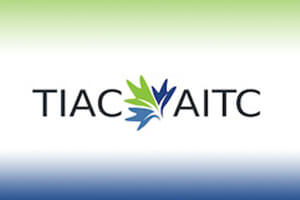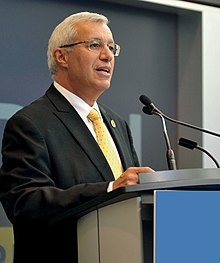Minister Fortier highlights new supports in Fall Economic Statement during virtual townhall with Waterloo Region Economic Development Corporation
The Voice of Canada News:
A second wave of the COVID-19 pandemic has gripped people and economies around the world, including Canada.
Mona Fortier, Minister of Middle Class Prosperity and Associate Minister of Finance, joined by the Honourable Bardish Chagger, Minister of Diversity and Inclusion and Youth and Member of Parliament for Waterloo, as well as Members of Parliament Tim Louis (Kitchener—Conestoga), Bryan May (Cambridge), and Raj Saini (Kitchener Centre), spoke with members of the Waterloo Region Economic Development Corporation about proposed investments in Supporting Canadians and Fighting COVID-19: Fall Economic Statement 2020. During the meeting, Minister Fortier discussed how the government will continue to protect Canadians’ health, jobs, and the economy.
The Fall Economic Statement provided an update on the Canadian economy, showing that the Government of Canada’s unprecedented investment has managed to stabilize the economy through the crisis. However, many businesses continue to face significant challenges as Canadians limit physical contacts, and employment gains have been slower for women, young people, racialized Canadians and lower income workers. The coming months will be difficult, and ongoing fiscal support will remain necessary deep into 2021 in order to protect jobs as well as our economy.
Once the virus is under control, the Government of Canada will invest in a growth plan of roughly three to four per cent of GDP, up to $100 billion, over three years, to jumpstart our recovery. Time-limited investments will help build a Canadian economy that is cleaner, more inclusive, more innovative and more competitive. The Fall Economic Statement puts a down payment on this plan, investing in measures that can be safely implemented now. It also begins work on transformative initiatives such as a Canada-wide Early Learning and Child Care System, programs to support the economy’s green transformation and measures to address systemic racism.
The government’s stimulus will be designed, first and foremost, to provide the fiscal support the Canadian economy needs to operate at its full capacity and to prevent any long-term damage to our economic potential. Key to this stimulus plan will be smart, time-limited investments that can act fast and make a long-run contribution to Canada’s future shared prosperity, quality of life, competitiveness, and green transformation.
Quotes
“Since the beginning of the pandemic we have been listening to Canadians and businesses, and we know they still need our support. The Fall Economic Statement reaffirms our government’s commitment to bridging Canadians to the other side of this pandemic. Once we defeat the virus and look to recovery, we will build back a stronger, more inclusive and sustainable country.”– Mona Fortier, Minister of Middle Class Prosperity and Associate Minister of Finance
“In the Fall Economic Statement we have outlined our government’s commitment to supporting small businesses and Canadians through to the other side of this pandemic. COVID-19 has impacted all Canadians and disproportionately certain segments. This will be a difficult winter yet by working together we will defeat this virus and build back an even stronger and consciously more inclusive Waterloo Region and Canada.”- Bardish Chagger, Minister of Diversity and Inclusion and Youth and Member of Parliament for Waterloo
Quick facts
- To date, more than eight of every 10 dollars spent in Canada to fight COVID-19 and support Canadians has been spent by the federal government and this unprecedented support has prevented economic scarring and stabilized the economy.
- The Fall Economic Statement proposes new measures to see Canadians and Canadian businesses through the pandemic and support a robust and resilient recovery, including:
- increasing the maximum Canada Emergency Wage Subsidy rate to 75 per cent for the period beginning December 20, 2020 and extending this rate until March 13, 2021;
- extending the current subsidy rates of the Canada Emergency Rent Subsidy to March 13, 2021, to provide greater certainty to businesses and other organizations;
- extending the deadline to apply for a Canada Emergency Business Account loan to March 31, 2021;
- creating the Highly Affected Sectors Credit Availability Program for the hardest hit businesses in sectors like tourism and hospitality, hotels, arts and entertainment;
- earmarking 25 per cent of all Regional Relief and Recovery Fund (RRRF) funding as dedicated to supporting local tourism businesses,ensuring the industry will have benefitted from more than $500 million in RRRF support through June 2021.
- As part of the Safe Restart Agreement, the Government of Canada has allocated $5.1 billion for the province of Ontario.
- As of late November, 306,842 loans were approved to businesses in Ontario, totaling $12.27 billion under the Canada Emergency Business Account.
- As of late November, 65,556 small business tenants representing 626,386 employees in Ontario benefitted from the Canada Emergency Commercial Rent Assistance, totaling $975.8 million.
- As of October 25, 544,660 applications to the Canada Emergency Wage Subsidy were received in Ontario, for a total of $18.5 billion in subsidies paid out.
- Canada entered the pandemic in a position of strength, with the lowest debt-to-GDP ratio among G7 peers, a position it still retains. Our history of prudent fiscal management and current historically low borrowing rates have meant that Canada’s debt is affordable now, and will be for future generations. In fact, federal debt-servicing costs, relative to the size of Canada’s economy, are at a 100-year low.










